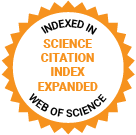Journal of Medical Internet Research
The leading peer-reviewed journal for digital medicine and health and health care in the internet age.
Editor-in-Chief:
Gunther Eysenbach, MD, MPH, FACMI, Founding Editor and Publisher; Adjunct Professor, School of Health Information Science, University of Victoria, Canada
Impact Factor 6.0 CiteScore 11.7
Recent Articles

In today’s digital era, the internet plays a pervasive role in our lives, influencing everyday activities such as communication, work, and leisure. This online engagement intertwines with offline experiences, shaping individuals’ overall well-being. Despite its significance, existing research often falls short in capturing the relationship between internet use and wellbeing, relying primarily on isolated studies and self-reported data. One major contributor to deteriorated wellbeing is stress. While some research has examined the relationship between internet use and stress, both positive and negative associations have been reported.

Ozempic (semaglutide) has received widespread attention for its appetite-suppressing effects, leading to extensive off-label use for weight loss. Although gastrointestinal side effects are well documented, less is known about how users assess the trade-off between perceived benefits and adverse effects, or how these assessments influence treatment discontinuation. Importantly, existing insights are often limited to clinical trial populations and may not fully reflect real-world experiences.

Structured medication reviews (SMRs) are an essential component of medication optimization, especially for patients with multimorbidity and polypharmacy. However, the process remains challenging due to the complexities of patient data, time constraints, and the need for coordination among health care professionals (HCPs). This study explores HCPs’ perspectives on the integration of artificial intelligence (AI)–assisted tools to enhance the SMR process, with a focus on the potential benefits of and barriers to adoption.

Postpartum depression affects up to 20% of mothers globally. Early detection is vital for better outcomes, yet screening lacks scalability and predictive power. Artificial intelligence—through machine, deep learning, and natural language processing—enhance the early identification of mothers at risk with greater accuracy.

Current food consumption patterns contribute to the rising prevalence of obesity and non-communicable diseases, and exacerbate environmental degradation. Digital media offer promising opportunities to promote healthier and more sustainable eating, yet evidence regarding their effectiveness remains fragmented.

The rapid growth of social media as an information channel has enabled the swift spread of inaccurate or false health information, significantly impacting public health. This widespread dissemination of misinformation has caused confusion, eroded trust in health authorities, led to noncompliance with health guidelines, and encouraged risky health behaviors. Understanding the dynamics of misinformation on social media is essential for devising effective public health communication strategies.

Obstructive sleep apnea (OSA) is a sleep disorder characterized by repeated breathing disruptions during sleep. Remote patient monitoring (RPM) of OSA is important, yet contemporary methods are limited. Sensor-based digital health technologies (sDHTs) promise a step advance in OSA RPM, but must provide meaningful, actionable, and usable outputs for patients. While the centrality of considering patient views in sDHT development is widely acknowledged, patient perspectives and priorities are rarely assessed.

The use of social media platforms, such as Reddit, to seek and share information about disease management and treatment strategies is increasingly common. In the context of asthma—a chronic condition characterized by limiting symptoms and exacerbations that require active patient engagement and adherence to treatment—there is a lack of research describing the content of Reddit posts and the specific topics of interest to patients.
Preprints Open for Peer-Review
Open Peer Review Period:
-
Open Peer Review Period:
-
Open Peer Review Period:
-
Open Peer Review Period:
-
Open Peer Review Period:
-




















